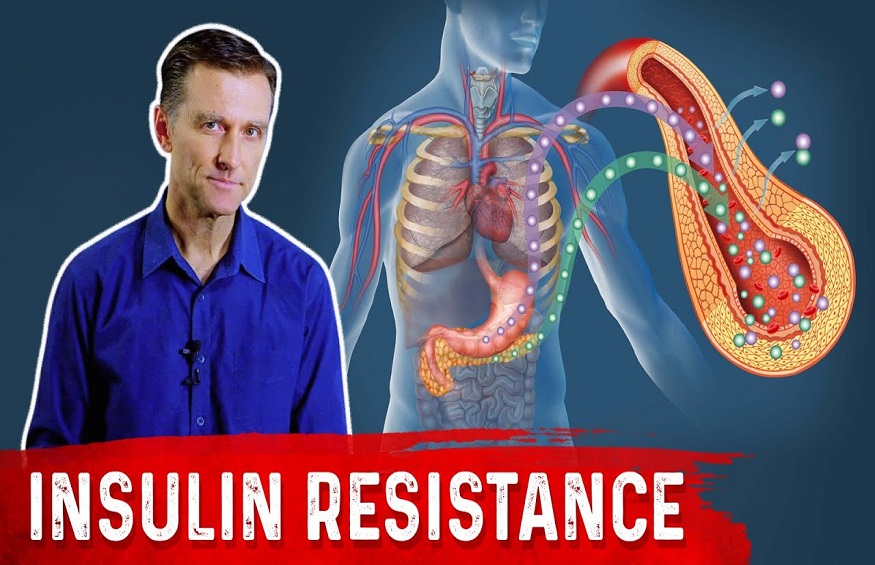Insulin resistance is a common health problem associated with obesity and a sedentary lifestyle, and it can be the precursor to diabetes and other cardiovascular problems. Discover how to prevent its appearance.
Insulin resistance is increasingly common in modern societies’ health problems. It appears when the body does not respond in a standard way to the insulin produced by the pancreas – more specifically, its beta cells – making it difficult for glucose to penetrate the cells. Insulin is a hormone responsible, among other functions, for controlling blood glucose levels and for glucose reaching muscle cells and being used as one of the primary sources of energy; It also prevents glucose from being produced in the liver after meals and the release of fatty acids.
Insulin resistance consists precisely in the loss of these functions, either due to the inability to carry out these tasks at the level of the liver, muscles, and fatty tissue or due to the loss of sensitivity of the tissues to the action of insulin.
Consequently, a high level of insulin is produced in the blood ( hyperinsulinism ), together with high glucose levels due to the loss or alteration of the essential function of insulin. This conditions a more excellent production of fatty acids that in turn block the action of insulin. And this excess of fatty acids accumulates in the abdominal adipose tissue ( central obesity ), liver ( hepatic steatosis or fatty liver), and the muscles.
This fact can be a non-pathological process as it happens in adolescence, aging, and even in some stages of pregnancy, for example. Still, it is closely linked to what is known as metabolic syndrome ( hypertension, dyslipidemia, obesity, and diabetes ), although not they’re synonyms. For this reason, insulin resistance is considered a fundamental link in the development of cardiovascular diseases and, particularly, type 2 diabetes.
Insulin resistance prevalence
Regarding the prevalence of insulin resistance, it is estimated that it is around 30% in men, while it is about 20-22% in women. This figure increases in direct relation to the increase in abdominal girth as an indicator of central obesity, affecting 50% of individuals with an abdominal circumference greater than 100 cm.
In specific cases such as polycystic ovary syndrome, six out of ten women have insulin resistance. In these two situations, it is demonstrated that obesity and, more specifically, the deposit of fat in the abdomen is the fundamental cause of the development of resistance to insulin action in the tissues.
Causes of insulin resistance
Although in most cases, a specific cause is not recognized as responsible for the development of insulin resistance, some risk factors that could influence its appearance have been identified :
Genetic factors: in some studies, it has been shown that there may be congenital abnormalities that condition that people with this syndrome present alterations in the insulin receptors themselves, thus interfering with the connection necessary to carry out its action once it is released from the pancreas into the blood, and finally captured in the tissues. Similarly, other theories attribute to an autoimmune mechanism why the connection between insulin and its receptors is not carried out correctly.
Obesity: the relationship between fat deposits in the abdomen and insulin resistance is a proven fact. Here, the fat cells counteract the action of insulin in the liver by releasing adipokines (tumor necrosis factor-alpha, interleukin 6, and resistin) through an inflammatory process and cause more excellent production of glucose in it perpetuating a stimulus of increased insulin in the blood. Likewise, the accumulation of fat in the muscles and less glucose uptake in them will be favored. All of this triggers glucose intolerance that can lead to diabetes.
Diet: in recent years, the consumption of saturated fats and diets rich in sodium has been associated with insulin resistance development. In contrast, the Mediterranean diet has been proposed as a protective factor. Total calorie intake per day is also postulated to be a more inducing factor than fats themselves.
Sedentary lifestyle: in the same way as obesity, the deposit of fatty acids in the abdominal adipose tissue is a fact related to the sedentary individual, while the customary practice of physical exercise avoids this mechanism of action and, therefore, the development of insulin resistance by reducing abdominal fat.
Drugs: the most representative example is cortisone or some of its derivatives (corticosteroids), used in the treatment of numerous diseases, which can condition the appearance of insulin resistance in chronic treatments.

